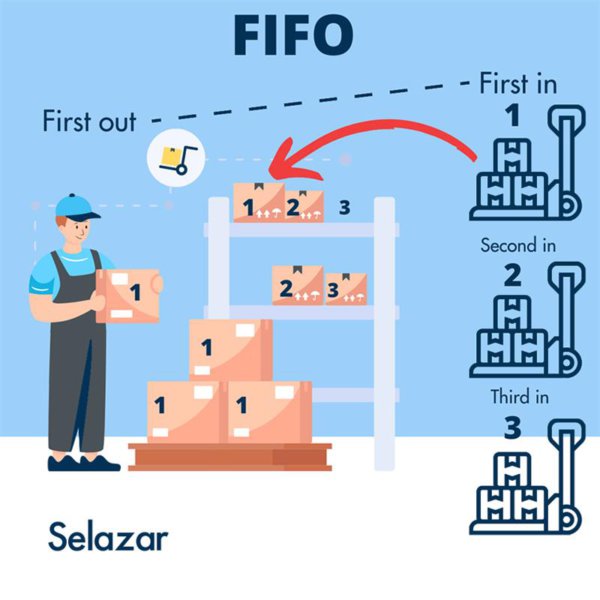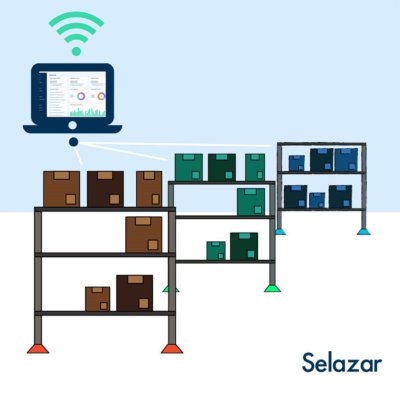FIFO is not a common term that most eCommerce sellers may be aware of – however, it’s an important one to understand before deciding to partner with any 3pl company. When it comes to warehouse storage and stock management, efficient systems are critical to keeping products organised and available correctly. That’s why we use the FIFO method as a workflow to organise the way goods are moved and stored. Complimentary to FIFO, another industry term is FEFO.
FEFO specifically relates to the storage of perishable goods as well as non-durable goods. Errors that happen within the inbound stock process for FEFO can lead to food waste and lost profits. For many companies’ waste is a substantial issue that can be caused by mismanagement. For example, approximately one-third of food produced for humans each year is entirely wasted, equating to 1.3 billion tons. Much of this is due to inefficient stock management systems.
Today we are discussing FIFO methods for both perishable and durable items, and why they matter for your thriving eCommerce business.
Table of Contents
ToggleWHAT IS THE FIFO METHOD AND WHAT DOES IT STAND FOR?
Fifo stands for first in first out. Fifo meaning is an inventory method, whereas the first incoming products or unit load are the first to leave. First in first out stock rotation is typically used to manage perishable products with an expiry date. It’s also a common method for products that may become obsolete or “go out of style” quickly.
So, the FIFO inventory method is used with several types of goods so that customers receive the newest quality materials and products. The handling of these products requires different methods for storage and shelf locations depending on the type of goods. Various products may expire at separate times so it’s critical to manage them well. This is where another term comes into play, FEFO.
Fefo stands for first expired first out. Relating to perishable items – they are brought into the warehouse and stored for as long as they are required for use. Perishable items can spoil and have a shorter shelf life, so proper FIFO storage of individual items matters.

When warehouses receive products, they must record their expiration date. When an item is sold online and transferred from its stock location to a picking bin, the product with the most recent expiration date must be picked – meaning the closest expiration date to the day it’s picked (or the first one on the shelf closest to the picker as previously organised).
This way the oldest product (first in) goes out first and the older product (last in) goes last. This ensures goods and materials stay fresh and don’t expire within the warehouse – otherwise, there could be a major monetary loss to the company. You can see how mismanaging inventory can easily lead to major waste.
BENEFITS OF THE FIFO METHOD
- PERFECT STOCK TURNOVER
- AVOIDS POSSIBLE STOCK EXPIRATION
- MITIGATES FINANCIAL LOSSES DUE TO WASTE
FIFO EXAMPLES OF GOODS
Common goods for Fifo are represented below. They are perishable foods, non-perishable foods, durable goods, and non-durable goods.
PERISHABLE FOODS
Perishable foods refer to rapid deterioration such as: Fish, fruit, vegetables, potatoes, plants, bread, meat, game, butter, eggs, milk, cheese & poultry.
NON-PERISHABLE FOODS
Non-perishable foods refer to canned goods and dried fruit items that have a longer shelf life than perishable foods. Such as: Canned meats, canned tuna and salmon, peanut butter, jelly, canned or dry soups, canned stews and chilli, tea bags, coffee, canned pasta, canned vegetables, canned fruit, canned pasta, cereals, rice, cake mixes, pancake mix, syrup, pasta, juice boxes, canned juices, canned beans, spam, canned gravy, sugar, baby food, formula, granola bars.
DURABLE GOODS
Goods not for immediate consumption and can be kept for an extended period are durable goods. Durable goods examples include: Computers, televisions, electronics, jewellery, office supplies, household goods, appliances, sports equipment, medical equipment, toys.
NONDURABLE GOODS
Nondurable goods are manufactured items that are not intended to last for an extended period of time but can have a shelf life of up to three years typically – such as: Clothing, paper, dish soap, laundry detergent, beauty products.
ECOMMERCE BUSINESSES THAT NEED FIRST IN FIRST OUT 3PL WAREHOUSING (FIFO)
Based on the type of goods you’ve seen above (Perishable and durable goods) 3pl logistics will fulfil almost anything – while making the expiry date a priority. When the Warehouse Management System (WMS) captures expiration date data, the system selects the stock box with the soonest expiry date for placement on picking shelves. FIFO perpetual inventory method management helps you manage products in the following eCommerce order fulfilment verticals.
1) FASHION FULFILMENT
2) COSMETICS FULFILMENT
3) NUTRITION FULFILMENT
4) HEALTHCARE FULFILMENT
5) SPORTING GOODS FULFILMENT
6) AMBIENT FOODS FULFILMENT
7) MOBILE FULFILMENT
8) PERISHABLE FOOD FULFILMENT
9) BEVERAGE FULFILMENT
10) HOMEWARES FULFILMENT
11) JEWELLERY FULFILMENT
THE FIFO METHOD & PALLET LOCATION TRACKING


To ensure proper and continuous control over products it is the 3pl warehouses‘ responsibility to inspect, identify & store, package and dispatch FIFO goods. Included in this process is a digital built-in feature for FIFO requirements. That is the software or warehouse management system (WMS) – which includes an embedded algorithm guaranteeing 99.9% accuracy.
The Fifo inventory method of organisation happens with live pallet tracking. For example, Selazar digitally maps its warehouses so that every SKU is tracked via its intelligent warehouse application. Every nook and cranny is stored digitally and can therefore be located instantly. Every item is ready to be picked and packed for the warehouse staff
when an order is made online. No outdated sheets of paper for this process, both making FIFO more efficient as well as less liable to human error.
This type of intelligent engineering allows 3PLs to respond to market demand from an application point of view. This becomes an advantage for the customer – always getting the correct goods and materials. Having established coordination from the website to the warehouse to the customer is easier than ever with live tracking tech-forward solutions.
FIFO MANAGES AND STREAMLINES YOUR ECOMMERCE FULFILMENT OPERATIONS
First in first out stock rotation 3pl warehousing brings efficiency to your fulfilment operations and storage solutions. FIFO helps perfect stock turnover, protects against the devaluation of stock, and prioritises the oldest obsolete products. Smart systems reduce spoilage and obsolescence, more specifically with companies in the food and beverage, pharmaceutical, and apparel industries. If you have any questions about FIFO or how our 3pl logistics services can help your thriving eCommerce business schedule a free discovery call today.
